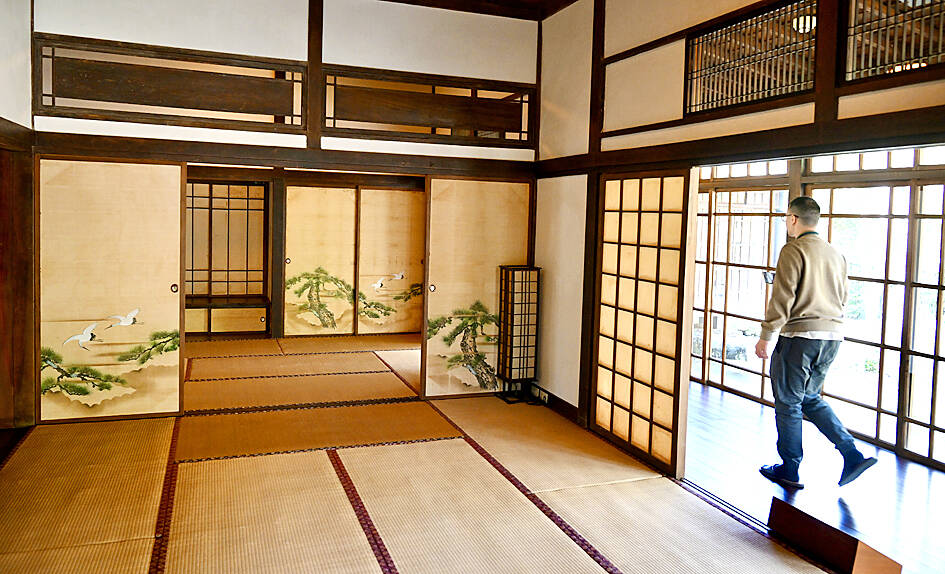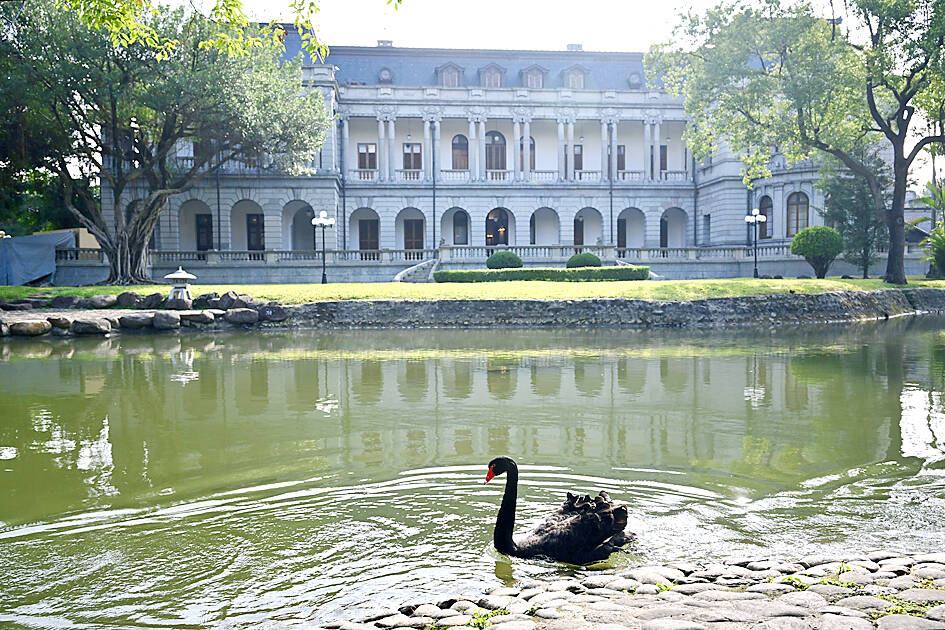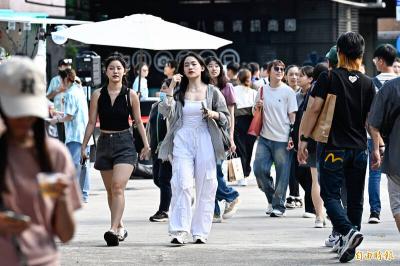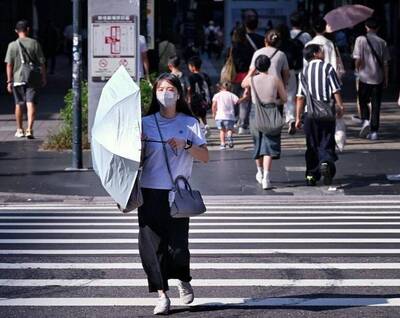Standing proudly on Ketagalan Boulevard near the Presidential Office Building is the Taipei Guest House, whose grandiose halls have for decades housed foreign dignitaries amongst European finery. However, it was only recently that reporters were granted a peek into the Japanese-style lodgings tucked away on its grounds.
Construction of the building was completed in 1901 as a residence for Taiwan’s governors-general during the Japanese colonial era. During that time, the mansion was used to welcome the Japanese imperial family, as well as foreign dignitaries and other top colonial officials.
With the arrival of the Chinese nationalists in 1946, it was renamed the Taipei Guest House while keeping its function as a reception space. More than a century later, not much has changed.

Photo: Lo Pei-de, Taipei Times
In 1998, the building was designated a national historical structure managed by the Ministry of Foreign Affairs by order of the Presidential Office.
The mansion was originally built in the Renaissance Revival style, then took on a more Baroque flair following renovations in 1913, ministry Department of General Affairs Director-General Bruce Hung (洪振榮) said on Jan. 30.
Although it has undergone numerous renovations over the years, the building has not changed aesthetically from the Japanese era, he said.

Photo: Lo Pei-de, Taipei Times
The western wing of the European-style mansion — which now serves as a reception area for foreign guests — was the office of the governor-general, while the eastern wing housed the main banquet and ceremonial halls, he said.
GREEN HIDEAWAY
The Taipei Guest House’s grounds have 720 trees of 74 different species, including 25 that are considered veteran trees. One of them, a tea tree beside the Heart Pond, was planted by Prince Chichibu during his visit to Taiwan in 1925.
Although rat traps are scattered around the grounds, Hung said that there is no infestation at the Guest House. However, the carefully maintained grounds do attract squirrels that might damage the bark, so staff use the traps to capture and move them.
Aside from the unwelcome squirrels, the pond is also home to a family of black swans that are now in their third generation.
However, the swans and Baroque halls were not the focus at a recent media open house.
Reporters instead were there for a glimpse of the Japanese-style bungalow, which is rarely open for viewing.
Appearing quaint next to its opulent neighbor, the bungalow is made entirely of Taiwan cypress, which lends its distinctive scent to its rooms, even to this day.
It used to serve as the living quarters of the governor-general, connected to the mansion by a wooden pathway. It is easy to imagine the colonial official sitting on the veranda, enjoying a panoramic view of the garden while listening to music from a nearby hall.
UNIQUE DESIGN
There are three unique design concepts used in the bungalow, Hung said.
First, the wooden doors do not have grooves or handles, but are opened automatically by gently pulling the center plank to the right, showcasing the ingenuity of Japanese craftspeople, he said.
Next, the tatami mats are arranged in a way to reflect its use as a living space, Hung said.
Finally, there is a special wooden shelf in the toilet designed to accommodate the many layers of a traditional kimono, he added.
One other design quirk can be found on the second story of the mansion. To accommodate visiting Japanese royals, every room has a fireplace.
GUIDED TOURS
The Taipei Guest House is open to the public once a month. Guided tours of the first and second floors of the mansion as well as the grounds are available.

Three Taiwanese airlines have prohibited passengers from packing Bluetooth earbuds and their charger cases in checked luggage. EVA Air and Uni Air said that Bluetooth earbuds and charger cases are categorized as portable electronic devices, which should be switched off if they are placed in checked luggage based on international aviation safety regulations. They must not be in standby or sleep mode. However, as charging would continue when earbuds are placed in the charger cases, which would contravene international aviation regulations, their cases must be carried as hand luggage, they said. Tigerair Taiwan said that earbud charger cases are equipped

Foreign travelers entering Taiwan on a short layover via Taiwan Taoyuan International Airport are receiving NT$600 gift vouchers from yesterday, the Tourism Administration said, adding that it hopes the incentive would boost tourism consumption at the airport. The program, which allows travelers holding non-Taiwan passports who enter the country during a layover of up to 24 hours to claim a voucher, aims to promote attractions at the airport, the agency said in a statement on Friday. To participate, travelers must sign up on the campaign Web site, the agency said. They can then present their passport and boarding pass for their connecting international

Temperatures in northern Taiwan are forecast to reach as high as 30°C today, as an ongoing northeasterly seasonal wind system weakens, the Central Weather Administration (CWA) said. CWA forecaster Tseng Chao-cheng (曾昭誠) said yesterday that with the seasonal wind system weakening, warmer easterly winds would boost the temperature today. Daytime temperatures in northern Taiwan and Yilan County are expected to range from 28°C to 30°C today, up about 3°C from yesterday, Tseng said. According to the CWA, temperature highs in central and southern Taiwan could stay stable. However, the weather is expected to turn cooler starting tonight as the northeasterly wind system strengthens again

Taiwan sweltered through its hottest October on record, the Central Weather Administration (CWA) said yesterday, the latest in a string of global temperature records. The main island endured its highest average temperature since 1950, CWA forecaster Liu Pei-teng said. Temperatures the world over have soared in recent years as human-induced climate change contributes to ever more erratic weather patterns. Taiwan’s average temperature was 27.381°C as of Thursday, Liu said. Liu said the average could slip 0.1°C by the end of yesterday, but it would still be higher than the previous record of 27.009°C in 2016. "The temperature only started lowering around Oct. 18 or 19